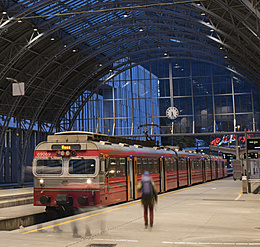Once an imposing residence of the royal family during the 14th Century, the Gyeongbokgung Palace, located in the heart of Seoul, is an architectural pagoda masterpiece. It spans over an area of 400,000 m2, and embodies centuries of Korean history and tradition. Now a monumental historical site and tourist attraction that draws millions of visitors from around the world. ERCO Light creates a magical atmosphere that enhances the architectural features of the various buildings during the night.
The initial construction of the Palace dates back to as early as 1395. After suffering major destruction as a result of various wars and conflicts, the complex was rebuilt and refurbished in 1868. However, during the Japanese colonial period (1910-1945), it was further damaged and partially demolished. It was not until 1990 that the modern-day Gyeongbokgung Palace, with its current array of residences, was reconstructed to its original form.






















